Dierama pulcherrimum
Dierama pulcherrimum (Hook.f.) Baker
Family: Iridaceae
Common names: Amathole hairbell, East London hairbell, African hairbell, angel’s fishing rod, fairy wand, wedding bell (Eng.); grasklokkies (Afr.)
Introduction
This large, elegant geophyte makes a striking garden display with its graceful, arching stems and delicate pendulous bell-shaped flowers that dance in the breeze. It is fully frost hardy and perfect for summer-rainfall rock gardens or next to ponds.
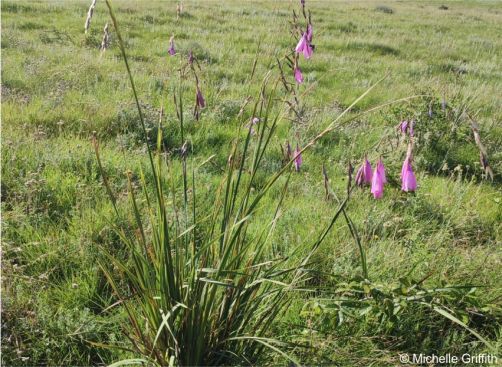
Description
Description
Dierama pulcherrimum is an evergreen perennial with flowering stems up to 1.8 m tall. Plants grow from corms 30–40 mm in diameter. The stems are either single, or a few tufted together in small clumps. The numerous, more or less linear leaves are shorter than the flowering stems, measuring 500–900 x 4–11 mm. Plants flower mainly in midsummer, between December and February. Light to dark magenta-pink or deep purple-red flowers are usually clustered together in long slender pendulous spikes. Common names of the species such as wedding bell, fairy wand and grasklokkies allude to the delicate, graceful nature of the inflorescences. The brownish bracts are lanceolate to elliptic-obovate, 23–34 x 10–14 mm. The ovoid flowers are 35–54 mm long, with tubes 10–14(–15.5) mm long and tepals 23–35(–39) x 10–19 mm.
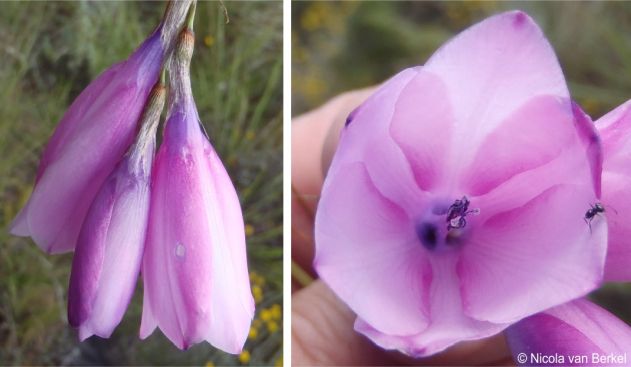
Dierama pulcherrimum is easily confused with D. pendulum but living plants can be distinguished by their ovoid flowers with suberect or weakly spreading tepals. Dierama pendulum has funnel-shaped flowers with widely flaring tepals. Dierama pulcherrimum occurs east of Makhanda (previously Grahamstown) and D. pendulum west of Makhanda.
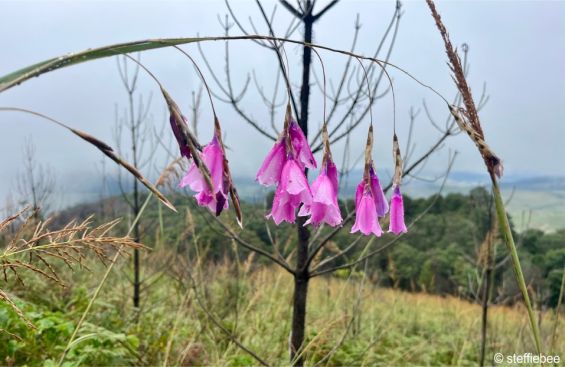
Conservation Status
Status
This species is assessed as Least Concern (LC) in the Red List of South African Plants. It is widespread with a stable population trend and has no known threats.
Distribution and habitat
Distribution description
Dierama pulcherrimum is a South African endemic occurring in the Eastern Cape. It is found in open grassland between Baziya mountain near Engcobo and the Amathole Mountains at elevations of ± 900–1 700 m.
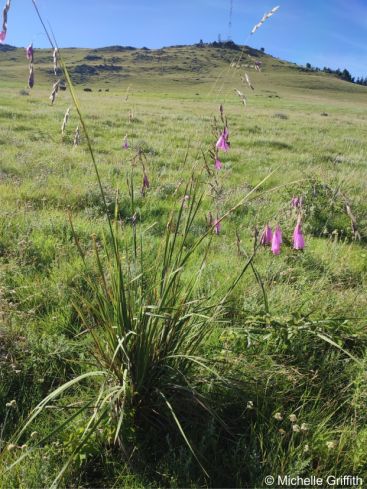
Derivation of name and historical aspects
History
Dierama is part of the large and diverse Iridaceae family which has approximately 1 800 species in about 65 genera worldwide. The family is named after the genus Iris, derived from the Greek word for 'ridescent, referring to the rainbow-like colours found in many species. The family is particularly well represented in southern Africa with numerous endemic genera and is an important horticultural family globally, with many species cultivated for their showy flowers.
Dierama is endemic to southern and eastern Africa and has approximately 45 accepted species of which 37 species occur in southern Africa. The genus extends from South Africa northwards through the highlands of tropical Africa to Ethiopia. The genus name Dierama is derived from the ancient Greek word dierama, meaning funnel and refers to the shape of the flowers. The name was established by botanist K. Koch in 1855. The specific epithet pulcherrimum comes from the Latin word pulcher, meaning beautiful and relates to the beautiful flowers. All the common names of the species e.g. hairbells, grasklokkies(meaning grass bell or flowering grass), wedding bell, angel’s fishing rod, refer to the delicate, bell-shaped flowers hanging on hair-like stalks from slender, flexible stems.
This species was first described by Joseph Dalton Hooker in 1866 as Sparaxis pulcherrima and in 1877 was transferred to Dierama by J.G. Baker. Dierama pulcherrimum was introduced to Britain by the famous Yorkshire nursery firm of Backhouse. James Backhouse the elder had travelled in South Africa on behalf of the Society of Friends and collected this species for introduction in Britain. The plant was introduced and flowered successfully at Kew and was illustrated in Curtis’s Botanical Magazine in 1866. It has been widely cultivated in Britain since then and remains popular in gardens.
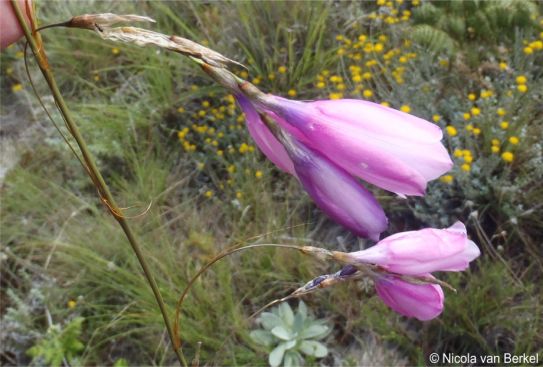
Ecology
Ecology
Dierama species are usually pollinated by solitary bees that forage for nectar and pollen. The flowers are also visited by crab spiders which lie in wait for pollinating insects. Cases of self-fertilisation have been recorded in cultivated D. pulcherrimum plants and the species is known to set seed freely. Dierama species are easily grown from seed, and natural variation in flower colour exists within species, so that seedlings may not be identical to parent plants even without cross-pollination. Seeds are dispersed in the near vicinity of the parent plant when the capsules split open and the long slender stems are whipped in the wind.
Dierama pulcherrimum may possibly hybridise with D. igneum in the Hogsback area, and dark red-flowered forms of D. pulcherrimum with the dark-flowered Dierama atrum (Dohne, Stutterheim, Pirie and King William's Town) and D. reynoldsii (Baziya-Engcobo) where they occur sympatrically.
Uses
Use
Dierama pulcherrimum has been used as an ornamental plant since the 19th century. It is a popular garden plant in countries such as the United Kingdom and Australia. It is important to note that D. pulcherrimum is often confused with D. pendulum in the nursery trade and these two species might hybridise in cultivation.
No uses have been recorded for D. pulcherrimum, but the corms of other Dierama species like D. pendulum and D. robustum are used as medicines by the Southern Sotho people of Lesotho. The corms are prepared as a decoction (a liquid preparation) and used as an enema that has strongly purgative properties.
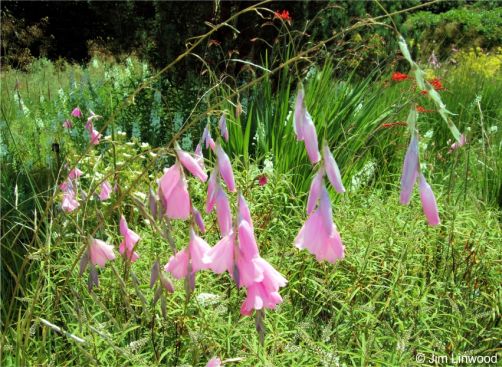
Growing Dierama pulcherrimum
Grow
This elegant plant, with long slender stems and pendulous flowers, makes an excellent addition to gardens. The thin flexible stems never stand still, even on a calm day the bell-shaped flowers wave and dance in the lightest breeze. This continuous graceful movement attracts attention in any part of the garden where they are planted. Dierama pulcherrimum is particularly well suited to flowerbeds near ponds or streams where the graceful, arching stems can overhang the water. They are also well suited for rock gardens or large containers. Grow plants in groups for maximum impact but avoid mixing with other species as competition from close neighbours is detrimental. Once established, plants are long-lived, with evidence from Edinburgh of clumps persisting for over 25 years.
Plants are evergreen and flower in midsummer, between December and February. As a South African summer-rainfall plant it requires sufficient moisture throughout the summer and is not suited to hot, dry borders. In winter-rainfall areas, supplementary watering during the summer will be necessary to maintain healthy growth. Plants are fully frost hardy and can tolerate temperatures down to about −10°C.
Propagate D. pulcherrimum from seed or by division of corms. Sow fresh seed in spring in a well-drained potting mix. Cover seeds lightly and keep moist until germination occurs. Transplant seedlings once they are large enough to handle but take care not to disturb the roots excessively as Dierama species resent root disturbance. Plants grown from seed typically take several years to reach flowering size.
For propagation via corms, carefully divide corms during the dormant winter period. Dierama pulcherrimum strongly resents being disturbed and if transplanted, can take months, sometimes up to a year, to re-establish. During this period the foliage may die away and the plant appears to be dead, but with patience, leaves will eventually reappear and the plant will recover. When dividing, separate the cormlets from the parent corm and replant immediately. Do not allow the corms to dry out. Plant corms in the spring.
Dierama pulcherrimum prefers acidic to neutral, humus-rich and well-drained soil. It can also grow in sandy, loamy or chalky soils, but good drainage is essential. Choose a position in full sun for best flowering. Water regularly during the growing season from spring through to autumn to keep the soil moist. Fertilization is beneficial to ensure robust growth and prolific flowering. Apply well-rotted organic matter at planting and a balanced or high-phosphorus fertilizer once in early spring to established plants.
This species is generally pest-free when grown in well-drained conditions. The main pest in the species' native habitat is the bruchid beetle (Urodon lilii), which burrows into developing seeds and destroys them. This beetle also attacks other genera in the Iridaceae family. In cultivation, good horticultural practices and proper drainage help prevent most problems.
References
- Dold, A.P. & Victor, J.E. 2020. Dierama pulcherrimum (Hook.f.) Baker. National Assessment: Red List of South African Plants version 2024.1. https://redlist.sanbi.org/species.php?species=1544-36.
- Duncan, G. 2010. Grow bulbs. A guide to the cultivation of bulbs of South Africa and neighboring countries. Kirstenbosch Gardening Series. South African National Biodiversity Institute, Cape Town.
- Goldblatt, P. & Manning, J.C. 2020. Iridaceae of southern Africa. Strelitzia 42. South African National Biodiversity Institute, Pretoria.
- Griffith, M. 2024-Jan. Observation of Dierama pulcherrimum, Hogsback, Eastern Cape. iNaturalist. Online. https://www.inaturalist.org/observations/197884027.
- Hilliard, O.M. & Burtt, B.L. 1991. Dierama, the hair bells of Africa. Acorn Books, Johannesburg & London.
- Linwood, J. 2014. Image of Dierama pulcherrimum, Savill Garden, United Kingdom. Wikimedia Commons. Online. https://commons.wikimedia.org/w/index.php?curid=35652934.
- Moteetee, A. & Van Wyk, B. 2011. The medicinal ethnobotany of Lesotho: a review. Bothalia 41(1): 209–228.
- Powrie, F. 1998. Grow South African Plants. A gardener's companion to indigenous plants. National Botanical Institute, Cape Town.
- Stearn, W.T. 2004. Botanical Latin. Timber Press, Oregon.
- Steffiebee. 2025. Observation of Dierama pulcherrimum, Amatola Hiking Trail, Eastern Cape. iNaturalist. Online. https://www.inaturalist.org/observations/265734182.
- Van Berkel, N. 2014. Observation of Dierama pulcherrimum, Hogsback, Eastern Cape. iNaturalist. Online. https://www.inaturalist.org/observations/10946285.
- Van der Spuy, U. 1971. Die groot veldblomboek vir die tuin. Tafelberg, Cape Town.
- Watt, J.M. & Breyer-Brandwijk, M.G. 1962. The medicinal and poisonous plants of southern and eastern Africa , edn 2. Livingstone, Edinburgh & London.
Credits
Natasha Lombard
National Herbarium, Pretoria
November 2025
Acknowledgements: Images by Michelle Griffith, steffiebee, Jim Linwood and Nicola van Berkel.
Plant Attributes:
Plant Type: Bulb
SA Distribution: Eastern Cape
Soil type: Sandy, Loam
Flowering season: Early Summer, Late Summer
PH: Acid, Neutral
Flower colour: Pink
Aspect: Full Sun
Gardening skill: Average
Special Features:
Horticultural zones
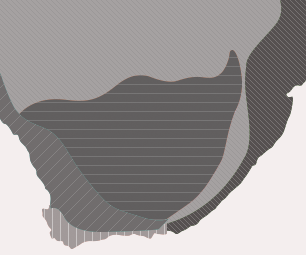









Rate this article
Article well written and informative
Rate this plant
Is this an interesting plant?
Login to add your Comment
Back to topNot registered yet? Click here to register.